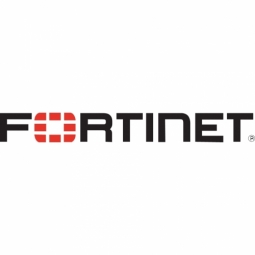Technology Category
- Cybersecurity & Privacy - Cloud Security
- Infrastructure as a Service (IaaS) - Hybrid Cloud
Applicable Industries
- Apparel
- National Security & Defense
Use Cases
- Cybersecurity
- Tamper Detection
Services
- Cloud Planning, Design & Implementation Services
- System Integration
About The Customer
Alibaba Cloud, also known as Aliyun, is the data intelligence backbone of Alibaba Group. It is one of China’s biggest cloud service providers with a goal to help organizations enhance the way they do business through their selling and operations online. Alibaba Cloud offers a broad suite of global cloud computing services to businesses, individual developers, and the public sector in over 200 countries and regions. The company aims to become more sustainable and efficient. Customers of Alibaba Cloud, such as Sodexo and Fung Group, leverage Fortinet’s cloud native integration with Alibaba Cloud to secure their hybrid cloud environments.
The Challenge
Alibaba Cloud, established in 2009, is a leading global cloud computing service provider serving businesses, individual developers, and the public sector in over 200 countries. Despite its success, Alibaba Cloud faced a significant challenge in ensuring robust, consistent security across its hybrid infrastructures. As organizations moved workloads and applications to the cloud, the digital attack surface expanded, making it harder to maintain consistent security across clouds and data centers. Alibaba Cloud needed a solution that would not only automate security processes but also apply consistent security policies throughout its hybrid infrastructures. This need was particularly pressing as Alibaba Cloud aimed to help organizations enhance their business operations online in a secure and efficient manner.
The Solution
To address this challenge, Alibaba Cloud partnered with Fortinet, a global leader in broad, integrated, and automated cybersecurity solutions. They expanded the Fortinet Security Fabric offerings and introduced new automation capabilities for Alibaba Cloud. This integration allowed organizations to extend security visibility and control from the data center to the cloud, ensuring consistent security policies regardless of where their applications were deployed. The Fortinet Security Fabric on Alibaba Cloud enabled customers to apply consistent security policies throughout their hybrid infrastructures, realizing multi-layer security protection and operational benefits for running applications on Alibaba Cloud. The solution included a broad range of Fortinet security offerings such as FortiGateVM, FortiWeb, FortiManager, FortiAnalyzer, and Fabric Connectors. These solutions addressed a broad set of use cases including protecting cloud workloads, securing hybrid cloud, and cloud-based security management.
Operational Impact
Quantitative Benefit

Case Study missing?
Start adding your own!
Register with your work email and create a new case study profile for your business.
Related Case Studies.

Case Study
Fire Alarm System and Remote Monitoring Sytem
Fire alarm systems are essential in providing an early warning in the event of fire. They help to save lives and protect property whilst also fulfilling the needs of insurance companies and government departments.Fire alarm systems typically consist of several inter-linked components, such as smoke detectors, heat detector, carbon monoxide, manual call points, sounders, alarm and buzzer. The fire alarm system should give immediate information in order to prevent the fire spread and protect live and property.To get maximum protection a shoe manufacturer in Indonesia opted for a new fire alarm system to monitor 13 production sites spread over 160 hectars. Although the company had an existing fire alarm system, it could not be monitored remotely.It was essential that the new system would be able to be monitored from a central control room. It needed to be able to connect to the existing smoke detector and manual call point. Information should be easily collected and passed on to the Supervisory Control and Data Acquisition (SCADA) system. Furthermore, the system should have several features such as alarm management, auto reporting, being connected to many client computers without additional cost, and run 24/7 without fails. The company also needed a system which could be implemented without changing the architecture of the existing fire alarm system.

Case Study
IoT Applications and Upgrades in Textile Plant
At any given time, the textile company’s manufacturing facility has up to 2,000 textile carts in use. These carts are pushed from room to room, carrying materials or semi-finished products. Previously, a paper with a hand-written description was attached to each cart. This traditional method of processing made product tracking extremely difficult. Additionally, making sure that every cart of materials or semi-finished products went to its correct processing work station was also a problem. Therefore, the company desired an intelligent solution for tracking assets at their factories. They also wanted a solution that would help them collect process data so they could improve their manufacturing efficiency.

Case Study
Retailer Uses RFID Scanner to Improve Efficiency
Patrizia Pepe wished to improve the logistics of their warehouse: accepting incoming goods from their production sites, movement of items throughout
the warehouse, and packaging of goods for distribution to the retail locations. They initially tried to use barcodes for this function. Because barcodes must be individually scanned within a line-of-sight, the acceptance of goods coming into the warehouse was too time consuming. Working with the University of Florence, Patrizia Pepe instituted a five-month pilot project beginning in August of 2009 to test the validity of an RFID solution. The pilot involved tagging of about 60,000 items for the second seasonal collection, and convinced the company to move forward with tagging all items.

Case Study
Monitoring and Controlling Automatic Mixing and Dispensing Machines
As technology advances, textile manufacturing has been transformed from a labor-intensive to a partially or fully automated industry. Automation is significant in all segments of textile production - from spinning to printing, and textile machinery manufacturers are constantly searching for new technologies and automation processes will increase the productivity of their machines. The color paste mixing and dispensing machine is an essential part of the printing and dyeing process. With the advantage of automatically computerized controls and database management, the system can significantly improve its dispensing precision, working efficiency and production quality as well as reducing material consumption.

Case Study
Data Capture for Afghanistan Forces
Electronic equipments on the field of Afghanistan provided information on the status of the vehicle and to identify potential threats surrounding it to the British Force. The monitoring and interpretation of this data requires robust and sophisticated digitization for data capture and communication.




